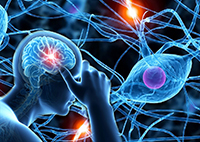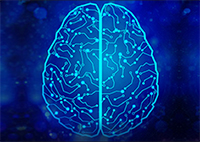COVID-19 is an emerging, rapidly evolving situation.
Get the latest public health information from CDC: https://www.coronavirus.gov
Get the latest research information from NIH: https://www.nih.gov/coronavirus
NIH staff guidance on coronavirus (NIH Only)
You are here
Septo-Optic Dysplasia Information Page

Septo-Optic Dysplasia Information Page
Septo-Optic Dysplasia Information Page
What research is being done?
The NINDS supports and conducts neurogenetic research which focuses on identifying and studying the genes involved in normal brain development. The knowledge gained from these fundamental studies provides the foundation for understanding how this process can go awry and, thus, may eventually give clues to understanding disorders such as SOD.
Information from the National Library of Medicine’s MedlinePlus
Eye Diseases
The NINDS supports and conducts neurogenetic research which focuses on identifying and studying the genes involved in normal brain development. The knowledge gained from these fundamental studies provides the foundation for understanding how this process can go awry and, thus, may eventually give clues to understanding disorders such as SOD.
Information from the National Library of Medicine’s MedlinePlus
Eye Diseases
The NINDS supports and conducts neurogenetic research which focuses on identifying and studying the genes involved in normal brain development. The knowledge gained from these fundamental studies provides the foundation for understanding how this process can go awry and, thus, may eventually give clues to understanding disorders such as SOD.
Information from the National Library of Medicine’s MedlinePlus
Eye Diseases
Septo-optic dysplasia (SOD) is a rare disorder characterized by abnormal development of the optic disk, pituitary deficiencies, and often agenesis (absence) of the septum pellucidum (the part of the brain that separates the anterior horns or the lateral ventricles of the brain). Symptoms may include blindness in one or both eyes, pupil dilation in response to light, nystagmus (a rapid, involuntary to-and-fro movement of the eyes), inward and outward deviation of the eyes, hypotonia (low muscle tone), and hormonal problems. Seizures may also occur. In a few cases, jaundice (prolonged yellow skin discoloration) may occur at birth. Intellectual problems vary in severity among individuals. While some children with SOD have normal intelligence, others have learning disabilities. Most, however, are developmentally delayed due to vision impairment or neurological problems.
Septo-optic dysplasia (SOD) is a rare disorder characterized by abnormal development of the optic disk, pituitary deficiencies, and often agenesis (absence) of the septum pellucidum (the part of the brain that separates the anterior horns or the lateral ventricles of the brain). Symptoms may include blindness in one or both eyes, pupil dilation in response to light, nystagmus (a rapid, involuntary to-and-fro movement of the eyes), inward and outward deviation of the eyes, hypotonia (low muscle tone), and hormonal problems. Seizures may also occur. In a few cases, jaundice (prolonged yellow skin discoloration) may occur at birth. Intellectual problems vary in severity among individuals. While some children with SOD have normal intelligence, others have learning disabilities. Most, however, are developmentally delayed due to vision impairment or neurological problems.
Treatment for SOD is symptomatic. Hormone deficiencies may be treated with hormone replacement therapy. The optical problems associated with SOD are generally not treatable. Vision, physical, and occupational therapies may be required.
Treatment for SOD is symptomatic. Hormone deficiencies may be treated with hormone replacement therapy. The optical problems associated with SOD are generally not treatable. Vision, physical, and occupational therapies may be required.
Septo-optic dysplasia (SOD) is a rare disorder characterized by abnormal development of the optic disk, pituitary deficiencies, and often agenesis (absence) of the septum pellucidum (the part of the brain that separates the anterior horns or the lateral ventricles of the brain). Symptoms may include blindness in one or both eyes, pupil dilation in response to light, nystagmus (a rapid, involuntary to-and-fro movement of the eyes), inward and outward deviation of the eyes, hypotonia (low muscle tone), and hormonal problems. Seizures may also occur. In a few cases, jaundice (prolonged yellow skin discoloration) may occur at birth. Intellectual problems vary in severity among individuals. While some children with SOD have normal intelligence, others have learning disabilities. Most, however, are developmentally delayed due to vision impairment or neurological problems.
Treatment for SOD is symptomatic. Hormone deficiencies may be treated with hormone replacement therapy. The optical problems associated with SOD are generally not treatable. Vision, physical, and occupational therapies may be required.
The prognosis for individuals with SOD varies according to the presence and severity of symptoms.
The prognosis for individuals with SOD varies according to the presence and severity of symptoms.
The prognosis for individuals with SOD varies according to the presence and severity of symptoms.
Septo-optic dysplasia (SOD) is a rare disorder characterized by abnormal development of the optic disk, pituitary deficiencies, and often agenesis (absence) of the septum pellucidum (the part of the brain that separates the anterior horns or the lateral ventricles of the brain). Symptoms may include blindness in one or both eyes, pupil dilation in response to light, nystagmus (a rapid, involuntary to-and-fro movement of the eyes), inward and outward deviation of the eyes, hypotonia (low muscle tone), and hormonal problems. Seizures may also occur. In a few cases, jaundice (prolonged yellow skin discoloration) may occur at birth. Intellectual problems vary in severity among individuals. While some children with SOD have normal intelligence, others have learning disabilities. Most, however, are developmentally delayed due to vision impairment or neurological problems.
Treatment for SOD is symptomatic. Hormone deficiencies may be treated with hormone replacement therapy. The optical problems associated with SOD are generally not treatable. Vision, physical, and occupational therapies may be required.
The prognosis for individuals with SOD varies according to the presence and severity of symptoms.
The NINDS supports and conducts neurogenetic research which focuses on identifying and studying the genes involved in normal brain development. The knowledge gained from these fundamental studies provides the foundation for understanding how this process can go awry and, thus, may eventually give clues to understanding disorders such as SOD.
Information from the National Library of Medicine’s MedlinePlus
Eye Diseases










